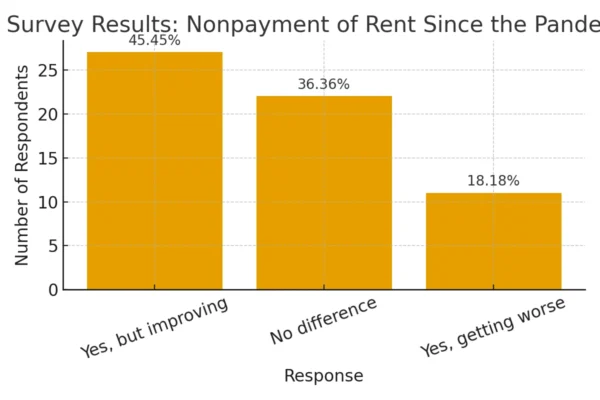What Are Landlord Tax Documents?
Landlord tax documents are essential forms used by landlords to report their rental income and expenses for tax purposes. These documents include Form 1099-Misc, Schedule E, and various receipts and invoices.
As a rental property owner, it’s crucial to understand the types of tax documents required by the IRS. Failure to comply with tax regulations can result in severe consequences, such as audits or penalties. The most critical landlord tax documents include form 1099-Misc, which reports rental income paid to non-employees, schedule E, which outlines rental income and expenses, and receipts and invoices for any costs associated with the rental property’s maintenance and repair.
We’ll discuss each of these documents in detail and how they contribute to a landlord’s overall tax obligations.
What Are Landlord Tax Documents?
Definition And Explanation Of Landlord Tax Documents
As a landlord, it’s important to stay on top of your tax obligations. Landlord tax documents are essentially the paperwork that you need to properly report any rental income you earn to the IRS.
These documents include forms like Schedule E and form 1099-Misc and are used to report your income, expenses, and deductions for the year.
Landlord tax documents are an essential part of being a property owner or manager, and they help you to stay compliant with tax law while maximizing your deductions.
Examples Of Landlord Tax Documents, Such As Schedule E And Form 1099-Misc
There are several different types of tax documents that landlords need to be aware of and they include:
 Schedule E: This is an IRS form used to report rental income from a property you own or manage. It also provides a place for you to claim deductions related to your rental activities, such as depreciation, mortgage interest, and repairs.
Schedule E: This is an IRS form used to report rental income from a property you own or manage. It also provides a place for you to claim deductions related to your rental activities, such as depreciation, mortgage interest, and repairs.- Form 1099-Misc: This document is used to report payments made to independent contractors or other service providers who have provided services to you as a landlord. This form is also used to report rental income earned from rental properties you own or manage.
- Form W-9: This document is used to collect information from independent contractors or service providers so that you can issue them a form 1099-Misc at the end of the year.
These are just a few examples of the many forms that landlords may need to manage their taxes properly.
Importance Of Keeping Track Of And Properly Filing Landlord Tax Documents
Landlord tax documents are essential for staying in compliance with tax law and avoiding penalties or fines.
Keeping track of rental income and expenses throughout the year helps you properly claim deductions and report your rental income while minimizing your tax liability.
Properly filing landlord tax documents also helps to maintain accurate records for your business and makes it easier to file your taxes each year.
By staying organized and keeping accurate records, you can avoid overlooking any necessary forms or information and maintain a good standing with the IRS.
Landlord tax documents are an important aspect of owning or managing rental properties. Understanding what they are and how to properly file them is crucial for staying in compliance with tax laws and maximizing your deductions.
Keep track of all necessary forms and information throughout the year to streamline the tax filing process and keep your business running smoothly.
Understanding Schedule E
Overview Of Schedule E
Landlord tax documents can be overwhelming for new property owners. However, Schedule E is an essential form that landlords need to fill out to report rental income and deductible expenses.
Explanation Of The Purpose And Requirements Of Schedule E
Schedule E helps landlords to report their rental income and expenses. This form is divided into two parts.
Part I determines the calculation of rental income, while part II determines the deductible expenses.
Below are the requirements for Schedule E:
- Landlord’s name and social security number
- Property description and address
- Rental income
- Expenses
- Mortgage interest
- Property management fees
- Property taxes
- Repairs and maintenance
- Insurance premiums
- Depreciation
Get a Free Multifamily Loan Quote
Access Non-Recourse, 10+ Year Fixed, 30-Year Amortization
Importance Of Accurately Filling Out Schedule E
Accurate completion of Schedule E is crucial for landlords. It ensures that they don’t overpay or underpay their taxes.
Moreover, filling out this form correctly helps landlords avoid any scrutiny from the IRS in case of an audit.
Tips For Efficiently Completing Schedule E
Filling out a Schedule E can be time-consuming and tricky for new landlords. Below are tips to help landlords efficiently complete Schedule E:
-
- Keep organized records of all rental income and expenses.
- Familiarize yourself with the IRS guidelines on Schedule E.
- Use a software program or tax professional for assistance.
- Separate personal and rental expenses to ensure that only deductible expenses are reported.
- Use depreciation accurately and consistently for each rental property.
By following these tips and efficiently filling out Schedule E, landlords can ensure that their tax reporting is done accurately and efficiently.
Form 1099-Misc Explained
Overview Of Form 1099-Misc
If you are a landlord earning rent income from your property, you need to understand form 1099-Misc. It is a tax document used to report miscellaneous income to the IRS.
The form is applicable to landlords who rent properties to tenants and is used to report payments received during the year.
Explanation Of The Purpose And Requirements Of Form 1099-Misc
The purpose of form 1099-Misc is to report miscellaneous income to the IRS. It is also used to report payments made to contractors, freelancers, and other self-employed individuals.
As a landlord, if your rental income exceeds $600 during the year, you are required to file this form.
You need to provide the form to the tenants who paid rent and include your name, address, and social security number or business tax ID number.
The Process Of Filing Form 1099-Misc
Filing form 1099-Misc can seem overwhelming, but the process is straightforward. Here are the steps involved:
- Collect the necessary information: Gather information on payments made to tenants throughout the year. Ensure you have their names, addresses, and taxpayer identification numbers.
- Fill out the form: Fill out Form 1099-Misc with the required information, including the tenant’s name and address, amount paid to them, and your name, address, and taxpayer identification number.
- Submit form 1099-Misc: Submit copy a to the IRS, copy B to the tenant, and keep copy C for your records.
- File 1096: File form 1096 with the IRS to summarize all the 1099-Misc forms you submitted.
Common Mistakes To Avoid When Filing Form 1099-Misc
Filing form 1099-Misc involves several compliance requirements, and it’s essential to avoid errors. Here are some of the common mistakes to avoid:
- Missing the deadline: Failing to file the forms on time can lead to penalties. The deadline for filing 1099-Misc is January 31st.
- Incorrect information: Ensure that the information reported on the forms is accurate, including names, addresses, and taxpayer identification numbers.
- Not providing a copy to the tenants: You are required to provide a copy of the form to the tenant who received rent payment.
- Failing to include all payments: Ensure that all rent payments made during the year are reported on the form. Keep accurate records throughout the year to avoid missing any payments.
Form 1099-Misc plays a crucial role in the landlord tax reporting process. By understanding the form’s purpose, requirements, filing process, and common mistakes to avoid, you can ensure compliance while minimizing errors.
Frequently Asked Questions For What Are Landlord Tax Documents
What Are Landlord Tax Documents?
Landlord tax documents are records of income and expenses related to rental properties.
What Documents Are Needed For Rental Income Tax?
Documents needed for rental income tax include rent receipts, 1099-Misc forms, and expense receipts.
How Do Landlords Save On Their Taxes?
Landlords can save on their taxes by deducting eligible expenses such as repairs, maintenance, and depreciation.
When Should Landlords File Their Taxes?
Landlords should file their taxes annually by April 15 or by the deadline for filing an extension.
Conclusion
As a landlord, understanding the various tax documents that come with managing a property is crucial for avoiding potential legal or financial troubles.
The types of documents may vary depending on your rental property’s structure and location.
However, common landlord tax documents include W-9 and 1099 forms, rental income statements, and expenses and maintenance receipts.
Keep in mind that accurate and timely filing can help you maximize tax deductions and avoid legal sanctions.
Furthermore, getting assistance from professional tax accountants or software can save you time and money in the long run.
Lastly, property management may be tedious, but it can be an incredibly profitable investment when done correctly.
By staying informed on your landlord tax documents, you can ensure the longevity and success of your real estate investment while keeping the taxman at bay.
Source: Rental Awareness













 Accessibility
Accessibility